DARWIN, Minn. — It has been 75 years since wound the first piece of baler twine around two fingers to form a ball and for 29 years he kept winding, creating the largest ball of twine in the world made by one man.
Johnson, a bachelor farmer and carpenter, started winding the twine in March of 1950 and by all accounts spent one to four hours each day methodically wrapping the twine as perfectly symmetrical as possible.
ADVERTISEMENT
When the ball of twine became too large for Johnson to wind and move manually, he began using railroad jacks — the kind used to lift boxcars — to move the ball around and keep it symmetrical as he continued adding twine.
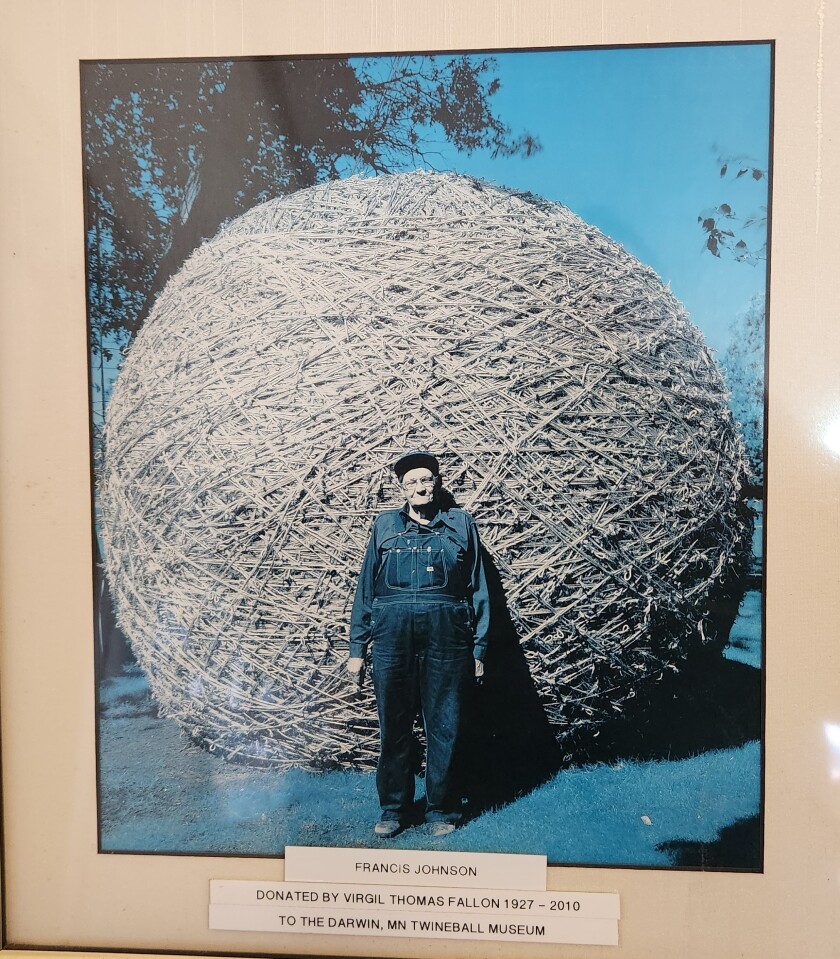
The history of Johnson and the Darwin Twine Ball is widely known, and the Darwin Twine Ball Museum also maintains a pamphlet about the history. Various local and regional newspaper articles are on display at the museum, and many more can be found on the online newspaper archive at Newspapers.com.
Johnson completed his ball of twine in 1979 and it was recorded in the as being the World’s Largest Ball of Twine, holding that title until 1994 when a twine ball formed by J.C. and Elsie Payne of Mountain Springs, Texas, overtook it.
But Johnson’s ball of twine is special — it is the largest ball of twine created by one man and is made completely of brown sisal twine. It weighs 8.7 tons, is 11 feet tall and measures about 40 feet around.
Another man, Frank Stoeber of Cawker City, Kansas, started winding a twine ball in 1953 to compete with Johnson, but he died in 1974, according to an Aug. 12, 2001, Star Tribune article. However, starting in the 1980s, residents of Cawker City held annual “Twine-a-thons” eventually surpassing Johnson’s record.
The Payne ball of twine in Texas that currently holds the record is a little more than 13 feet tall and a little more than 41 feet around. It was formed with the help of 70 people and is constructed of nylon twine, weighing in at 6.5 tons, according to an article in the Dec. 1, 1993, Star Tribune.
The article attributes Thea Underhill, then manager of the Darwin Country Store, as saying, “And therein lies the problem. It still stands that this was an original and this was made by one man. It was an accomplishment. The rest were all copies.’”
ADVERTISEMENT
The article reported that the Paynes set out in 1989 to break the record and that Johnson knew his record would be broken someday. The article quotes Johnson from a previous interview regarding the Cawker City twine ball: “I told them they’re welcome to it. I can’t stop them.”
Johnson, born on April 17, 1904, in Kingston Township to Magnus and Harriet Johnson, lived his entire life in Meeker County and was known as an eccentric character who collected a wide range of various things, which Johnson himself attributed to his mother telling him to never waste anything.
His father was a Swedish immigrant farmer who served in the U.S. House of Representatives in the 1930s and as a U.S. senator in the 1920s. He was active in the Farmer-Labor Party and Johnson often drove his father during campaign events, according to an article in the Sept. 18, 1992, Star Tribune. “The twine ball made Francis far more famous than his father,” the article states.
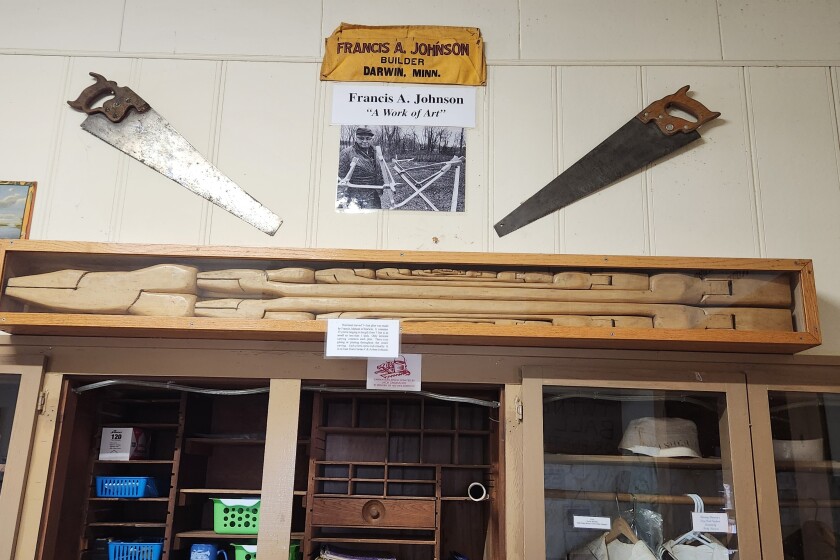
Johnson was also a talented wood carver and carved giant wooden pliers that contained sets of smaller and smaller wooden pliers.
One set of pliers was seven feet in length and contained 25 additional pliers ranging in size from 7 feet to 1 inch.
Each individual pliers opens and the basswood carving contains no pins, pegs or glue holding any of the pliers together. It is approximately 20 feet in length when fully open.
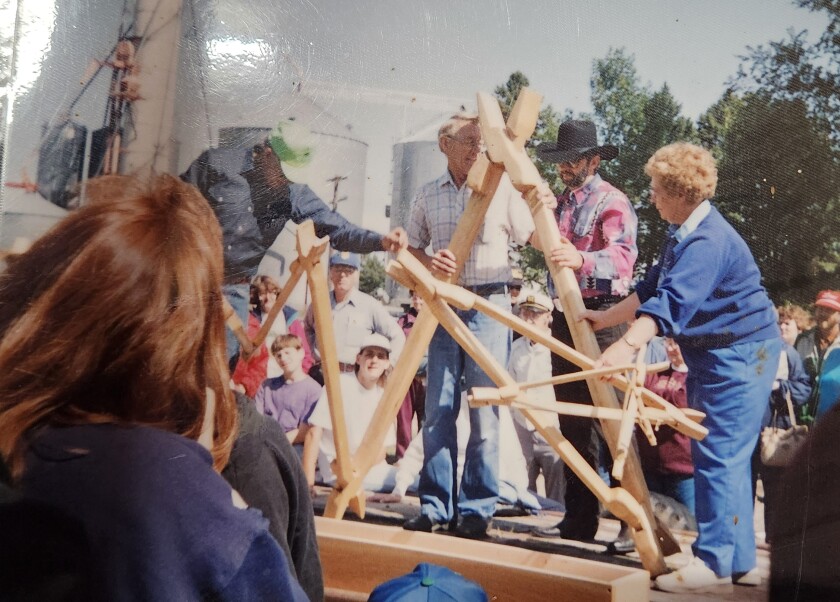
When Johnson died on Oct. 24, 1989, the twine ball and other collections, which included 7,000 wood pencils, 1,700 carpenters aprons, 20,000 old irons, toy sewing machines, ancient tools and other items, helped to revitalize the small town of Darwin, Minnesota.
ADVERTISEMENT
“It’s genuinely touching, albeit a little bit surreal, to hear Darwin residents talk about how the product of Johnson’s whimsy gave the town something to rally around economically, and to see old TV-news footage of the twine ball being trucked to the town square for display after Johnson’s death,” read an article in the Nov. 18, 1993, Star Tribune reviewing the
During Johnson’s lifetime, the twine ball was located in his front yard just east of Darwin, north of U.S. Highway 12 and protected by the top of an old silo.
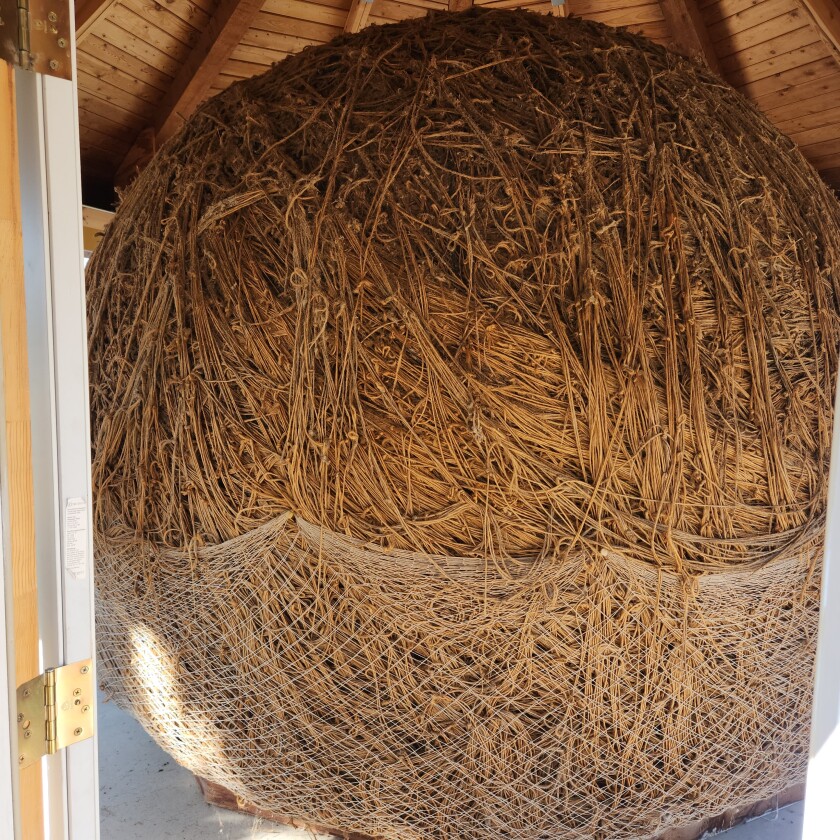
When the city of Darwin acquired the twine ball in 1991, its new home was a wooden gazebo with clear Plexiglas panels in the center of town. Johnson’s collections were displayed at various businesses.
For 20 years, Ripley’s Believe It or Not had attempted to buy the Darwin Twine Ball and also tried to convince the Darwin Community Club to give it up after Johnson died.
“Their ploy was, ‘Who’s going to see it in Darwin?’” Underhill is quoted as saying in an Aug. 12, 2001, Star Tribune article. “Our little club explained, ‘We’ll take care of that.’”
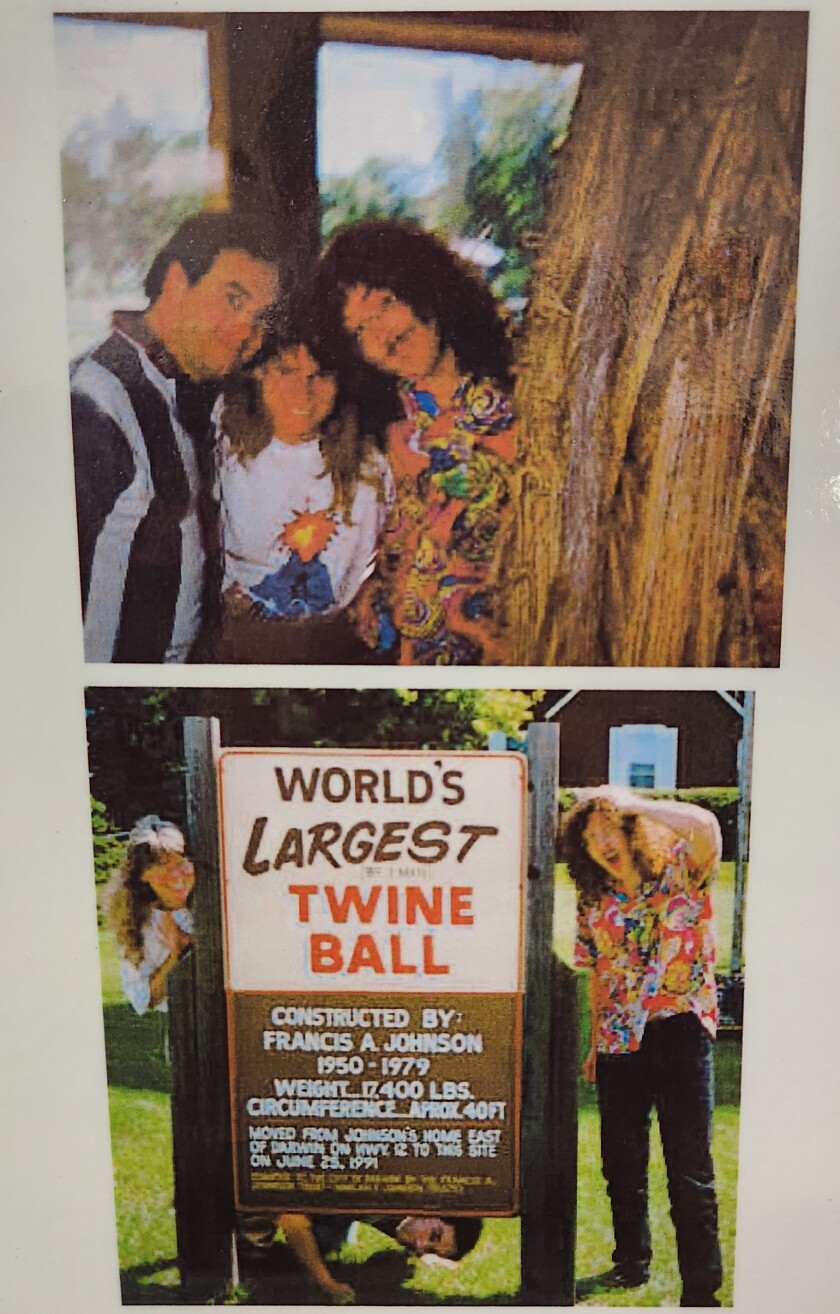
And indeed, it did — with a little help from Weird Al Yankovic, who recorded on his 1989 album "UHF." Yankovic visited the ball of twine in 1996 and his fans also often visit the twine ball. The alley next to the Twine Ball Museum is Weird Alley.

People from all over the world travel to Darwin to see the largest ball of twine made by one man and it is estimated by the Twine Ball Museum that about 150 people visit it daily in the summer months.
ADVERTISEMENT
The same year that the twine ball moved into town, Darwin began celebrating Twine Ball Days on the second Saturday of August. It is a daylong celebration with a race, volleyball tournament, parade and more. This year will be the 34th annual celebration.
This year will also be the 13th annual Darwin Night at the Ballpark at Saints Field in Dassel, honoring Darwin’s former town baseball team. The event takes place on the night that the Dassel-Cokato Saints play the Litchfield Blues, which this year is July 9, and folks wear Darwin baseball jerseys and there are twine ball races and other festivities.

In 2014, people in Darwin’s sister city Darwin, Northern Territory, Australia, listened on the radio as Darwin, Minnesota, Mayor Josh Johnson told them the story of Francis Johnson and the Darwin Twine Ball. In July of 2015, Lord Mayor Katrina Fong Lim of Darwin, Australia, came to visit the twine ball, according to a July 27, 2015 article in the Dassel-Cokato Enterprise Dispatch.
Not only have people traveled from around the world to see the the twine ball itself, along with Johnson, traveled to New York City in 1958 to appear on the TV show “I’ve Got A Secret,” according to an article in the March 4, 1994, St. Cloud Times. At that time, it weighed about 6,000 pounds, was only 8 feet across and it was estimated the twine would be about 930 miles long if unraveled.
The Darwin Twine Ball was also series. KARE 11 News also featured in a past news report.
In the 1993 Star Tribune article, Edward Meyer, then vice president of exhibits and archives at Ripley’s world headquarters in Orlando, Florida, lamented, “I really thought we would get that ball when Francis died.”
Although it was unable to acquire Johnson’s world-famous ball of twine, Ripley’s Believe It or Not did acquire the Payne nylon ball of twine and it is displayed in Branson, Missouri. It also acquired Johnson’s collection of carpenters aprons.
ADVERTISEMENT
The old Darwin railroad depot was moved and sits behind the gazebo that houses the twine ball. The depot houses the Twine Ball Museum to display the history of Johnson and the town of Darwin. It also serves as a souvenir shop, which sells miniature twine balls, twine ball starter kits, T-shirts, hats, mugs and other twine ball souvenirs.









